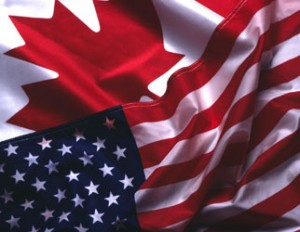Cross-border shopping for ETFs
The best bargains in the U.S. aren’t at the gas stations or outlet malls, but on the stock exchanges.
Advertisement
The best bargains in the U.S. aren’t at the gas stations or outlet malls, but on the stock exchanges.

Investors in the U.S. have it easy. In Canada, our selection of index funds is limited, and the costs are often too high. Meanwhile, companies like Vanguard, Schwab and Fidelity offer Americans an extraordinary menu of funds that carry fees of 0.10% or less.
The good news is, while Canadians are not allowed to buy American mutual funds, we can buy their exchange-traded funds (ETFs). Anyone with a discount brokerage account can invest in any ETF listed on the New York exchanges. Here’s why you should consider adding U.S.-traded ETFs to your Couch Potato portfolio:
They’re ridiculously cheap. The most popular U.S. stock index is the S&P 500, which includes 500 of the largest American companies. The Canada-based iShares S&P 500 Index Fund (TSX: XSP) has an annual fee of 0.24%, which is low by our standards. But you can buy ETFs on the U.S. exchanges that follow the S&P 500 for as little as 0.06%.
They’re more diversified. The best way to capture U.S. equity returns is to invest in a “total market” index fund that includes mid-sized and small companies as well as the giants in the S&P 500. Only one Canadian index fund (from CIBC) fits this description, and it charges 1.10%. That’s why my pick for U.S. equities is the Vanguard Total Stock Market ETF (NYSE: VTI), which includes almost 3,400 companies covering 99.5% the market. The cost for owning a slice of the world’s largest and most diversified economy? An annual fee of just 0.07%.
They cover the world. Want to buy the entire international market with a single fund? Look at the Vanguard Total International Stock ETF (Nasdaq: VXUS), which holds an astounding 6,500 stocks in 44 countries—virtually the whole world except the U.S. Amazingly, it charges just 0.20% annually.
They track their indexes well. The difference between the return of an index (which is theoretical) and an index fund’s actual return is called the “tracking error.” A low-cost, well-managed index fund should only trail its index by a few tenths of a percentage point. Unfortunately, Canadian index funds and ETFs holding foreign equities often have large tracking errors. American ETFs aren’t immune to this, but many have huge economies of scale and top-notch management that allow them to hug their benchmarks closely. The S&P 500 ETFs consistently mirror the index almost perfectly, while Vanguard’s VTI trailed its benchmark by a mere 0.02% annually over the last five years.
If you’d like to buy U.S. ETFs, it’s not hard to do. Any investment account with a discount brokerage (not including registered accounts, like an RRSP) will let you hold American dollars and trade U.S. stocks and ETFs in their native currency. But there are a few things to be aware of:
Watch for currency exchange fees. In a regular taxable account, you can avoid currency exchange fees by depositing greenbacks directly from a U.S. dollar bank account and buying American ETFs with that cash. But things are more complicated in a registered account. Only three discount brokerages allow you to hold U.S. dollars in an RRSP: Questrade, QTrade and RBC Direct Investing. (None of them allow you to do so in an RESP.) Everywhere else, you must buy your U.S. ETFs with Canadian dollars and the brokerage automatically converts the currency, charging you a hefty fee of about 1.5%. (Scotia iTrade offers a partial solution: with their “U.S.-Friendly RRSP,” you pay a flat fee of $30 per quarter to obtain a preferred exchange rate.)
Always call your brokerage and ask for a better rate if you’re exchanging more than $10,000 or so. Several investors have told me they have been able to get rates as low as 0.6% on large transactions.
Understand the currency risk. A rising loonie can hurt the returns of Canadians holding foreign investments. Most U.S. and international index funds in Canada use “currency hedging” to protect investors from this potential loss. If you buy a U.S.-listed ETF, however, you are fully exposed to the currency risk: a climbing Canadian dollar will lower your returns.
Of course, hedging is a double-edged sword: a stronger American dollar will boost returns for Canadians holding U.S. stocks. And many people believe it’s unlikely the loonie will rise much farther, which makes unhedged ETFs particularly attractive now. “Our U.S. equity investments are currently in unhedged U.S.-listed ETFs,” says Vikash Jain, portfolio manager with archerETF in Toronto. “The Canadian dollar has strengthened tremendously, but will it always be so strong? Probably not.”
If you’re buying U.S.-listed ETFs that hold overseas stocks, the currency issue gets confusing. Even though you buy and sell the funds in U.S. dollars, they do not have exposure to the greenback. “This is because the underlying stocks are denominated in their local currencies,” Jain explains. For example, if you buy an ETF that tracks the Chinese market, you only need to be concerned about the loonie’s strength versus China’s currency, the renminbi. A falling U.S. dollar will have no effect on your returns.
Share this article Share on Facebook Share on Twitter Share on Linkedin Share on Reddit Share on Email